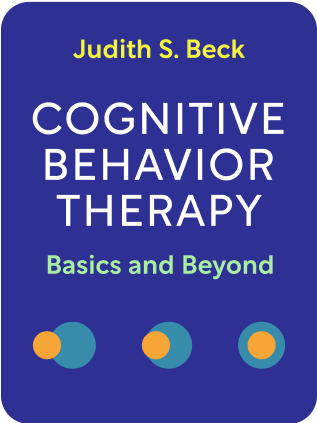

This article is an excerpt from the Shortform book guide to "Cognitive Behavior Therapy: Basics and Beyond" by Judith S. Beck. Shortform has the world's best summaries and analyses of books you should be reading.
Like this article? Sign up for a free trial here .
What are the best tips for therapists? What are some common problems you should avoid?
From patient engagement, to the structure of a session, to setting feasible expectations, there are many things to consider as a therapist. Knowing some effective tips for therapists can help you navigate this, as well as understanding common issues you might face.
Keep reading for the best tips for therapists.
8 of the Best Tips for Therapists
Here are some helpful tips for therapists, targeting common problems you might face in your practice:
1) Be Aware of Possible Problems
As a therapist, you may run into the following shortcomings:
- Failing to set patient expectations for therapy, and of her responsibilities.
- Failing to emphasize key automatic thoughts
- Failing to summarize frequently
- Failing to summarize using patient’s own words
- Failing to ask the patient for depth of understanding
- Failing to provide rationale for agenda items or your direction
- Failing to make a therapeutic intervention—just talking about problems without solving them or assigning homework
- Failing to record therapy notes for patient to review
Getting feedback on your performance is helpful. Ask the patient if you can record their session, so you can review the session with a colleague.
Beware of your own negative automatic thoughts about the patient, therapy, or yourself. Not all sessions will go well. Instead of catastrophizing the problem and questioning your ability as a therapist, see it as an opportunity to refine your skills.
2) Manage Patient Engagement
In general, problems in CBT sessions can be a result of one of two issues: 1) insufficient socialization (the patient lacks training on what to do) or 2) reluctance to comply (the patient knows what to do but doesn’t want to do it).
Distinguish between the two by socializing the patient to the CBT model.
- If the patient gives a neutral reaction, then it’s a socialization problem.
- If the patient is frustrated, then follow this standard procedure, 1) thank the patient for expressing her thoughts, 2) investigate automatic thoughts, 3) provide rationale for what you’re doing. Directly tackling automatic thoughts can work, but sometimes it causes too much friction
Causes of reluctance to comply include a weak therapeutic alliance; ineffective structure or pace of session; unrealistic patient expectations; lack of patient understanding of cognitive model; or the patient’s biology or external environment.
3) Know How to Interrupt
To get the session on track to cover the most helpful items, you will have to interrupt.
An effective way to do this is to:
- Ask if you can interrupt
- Ask for what you want, or summarize what you’re hearing
- Ask if that sounds right.
If the patient is upset at the interruption, follow the standard procedure from above. Also apologize for interrupting, and ask if they would like to continue and leave some topics behind, or to talk uninterrupted.
4) Don’t Over-Structure
If the patient’s automatic thoughts reveal feeling boxed in by the session, ask if the patient would like to begin the session without agenda setting but just talking at length.
5) Don’t Challenge
Never challenge a patient’s thought or belief. This violates the collaborative empiricism of CBT. You are to guide the patient to examining her own thought.
6) Increase Homework Completion Rate
Here are techniques to increase CBT homework completion rate:
- Commitment devices
- Daily checklists of tasks
- Scheduling tasks in the patient’s calendar
- Ask the patient to leave a voicemail with you whenever finishing a task
- Find barriers for doing homework, and problem solve those barriers.
- Rehearse the situation leading up to doing homework to find issues.
- These may be practical barriers, such as lacking time in schedule or forgetting.
- They may also be mental barriers, such as overestimating time or effort, overcoming the activation energy to get started, or believing it won’t work.
- Ask the patient what the worst that can happen is, and the best.
- Remind the patient that they’re not aiming for perfection.
- Anticipate negative results of homework and address subsequent automatic thoughts
- Start homework in session, so that offline homework is merely continuation of the task rather than completion.
7) Give Positive Reinforcement
- Positively reinforce patients for providing feedback. “It’s great that you recognized your thinking.”
- Positively reinforce patients for making strides in their therapy. For example, when the patient notices automatic thoughts, suggests new solutions, or does homework.
- Highlight evidence of improvement makes the patient more optimistic that the method is working. Improve the patient’s mood during the session and create a plan to feel better during the week.
- Emphasize the positive.
- Elicit patient strengths.
- Elicit positive data from the preceding week. “What positive things happened since I saw you last?”
- Elicit data contrary to their negative thoughts.
- Ask what positive data means about the patient.
- Give positive feedback on adaptive coping mechanisms: “What a good idea.”
- Don’t attack the core beliefs too early—this can endanger the alliance. Instead, identify the cognitions that are closest to conscious awareness, then work your way down into core beliefs over time.
8) Read This Example Discussion
This example dialogue pieces together the three steps of identifying automatic thoughts, evaluating them, and creating a behavioral experiment.
- Therapist: OK, Sally, you wanted to talk about getting a part-time job?
- Patient: Yeah, I need to work for the money, but…I don’t know.
- Therapist: [noticing Sally’s dysphoria] What’s going through your mind right now?
- Patient: [automatic thought] I can’t handle a job.
- Therapist: [labeling the idea as a thought and linking to her mood] And how does that thought make you feel?
- Patient: [emotion] Really sad. Hopeless.
- Therapist: [beginning to evaluate the thought] What’s the evidence that you can’t handle a job?
- Patient: Well, I’m already having trouble getting through my classes, so how can I handle a job?
- Therapist: Is there anything else?
- Patient: I feel so tired everyday. It’s already hard to just look for a job—how can I actually go to work everyday?
- Therapist: In a minute we’ll look at that. [suggesting an alternative view] It’s possible that looking for a new job is the harder part, and that once you have a job, keeping it is easier. Is there any other evidence that you couldn’t handle a job, assuming you can get one?
- Patient: No, nothing comes to mind.
- Therapist: [evidence on other side] Is there any evidence on the other side, that you might be able to handle a job?
- Patient: I did keep my part-time job last year, and I was able to do OK in school too. But this year…I don’t know.
- Therapist: Is there any other evidence you could handle it?
- Patient: It’s possible if the job didn’t take that much time and wasn’t so hard, I could keep it up.
- Therapist: What kind of job might that be?
- Patient: Maybe working in a store, like what I did last year.
- Therapist: [helping build concrete solutions] Are there any places like that where you could find a job?
- Patient: Maybe the college bookstore. I saw they were hiring in an email.
- Therapist: OK. And what would be the worst that could happen if you got a job there?
- Patient: I’d get overwhelmed and fail.
- Therapist: If that happened, how would you cope?
- Patient: I guess I’d quit.
- Therapist: What would be the best that could happen if you got a job there?
- Patient: I guess it’d be easy like last year and I could do it.
- Therapist: What’s the most realistic outcome?
- Patient: It probably won’t be easy at first, but I might be able to handle that and school at the same time.
- Therapist: Sally, what’s the effect of believing your automatic thought, “I can’t handle a job?”
- Patient: It makes me feel sad. It makes me stop wanting to try.
- Therapist: And what’s the effect of changing your thinking, of realizing that you realistically could work in the bookstore?
- Patient: I’d feel better. I’d apply for the job.
- Therapist: So what do you want to do about this?
- Patient: I want to go to the bookstore and apply for the job.
- Therapist: When will you go?
- Patient: I guess this afternoon.
- Therapist: How likely are you to go?
- Patient: Pretty likely. I’ll go.
- Therapist: How do you feel now?
- Patient: Better. A little nervous. But I’m hopeful.
Here, Sally can write a coping card that prepares a response to the situation: “If I’m afraid to go to the bookstore, remind myself that I probably could handle a job there and, in the worst case, I could quit. Even then, it’s not a big deal.”
The above tips for therapists will help you improve your practice and avoid common problems.

———End of Preview———
Like what you just read? Read the rest of the world's best book summary and analysis of Judith S. Beck's "Cognitive Behavior Therapy: Basics and Beyond" at Shortform .
Here's what you'll find in our full Cognitive Behavior Therapy: Basics and Beyond summary :
- How to use CBT to overcome anxiety, sadness, anger, frustration, and stress
- How to address traumatic events earlier in your life, so that they have less hold on your thinking today
- The key ways to build rapport as a cognitive behavior therapist






